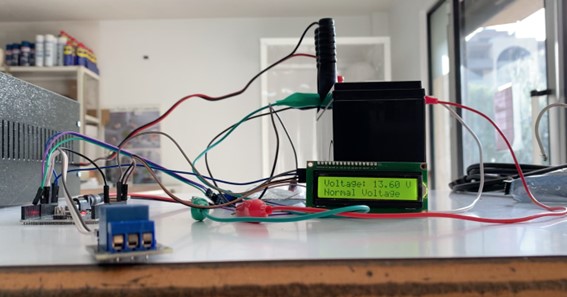Are you curious to know what is cut in voltage? You have come to the right place as I am going to tell you everything about cut in voltage in a very simple explanation. Without further discussion let’s begin to know what is cut in voltage?
Cut-in voltage is an important term used in electrical engineering, particularly in the context of electrical systems and devices that use direct current (DC) power sources. In this blog, we will explore what cut-in voltage is, how it works, and its significance in electrical systems.
What Is Cut In Voltage?
Cut-in voltage, also known as threshold voltage, is the minimum voltage required to start the flow of electrical current in a device or electrical system. In other words, it is the voltage at which a device or system will begin to function and perform its intended task. Cut-in voltage is particularly important in electronic devices that rely on semiconductors, such as transistors, diodes, and integrated circuits.
How Does Cut-In Voltage Work?
In electrical systems, cut-in voltage is used to control the flow of electrical current. When a device or system is powered on, the voltage is gradually increased until it reaches the cut-in voltage. At this point, the device or system begins to function and current begins to flow through the circuit. The cut-in voltage is typically set by the device manufacturer and can vary depending on the type and specifications of the device.
In electronic devices that use semiconductors, such as transistors and diodes, cut-in voltage plays a crucial role in controlling the flow of electrical current through the device. When the voltage across a semiconductor material reaches the cut-in voltage, the material undergoes a process called doping, which allows electrons to move freely through the material and conduct electrical current.
Significance Of Cut-In Voltage
Cut-in voltage is an important factor in ensuring the proper operation and performance of electrical systems and devices. By setting a specific cut-in voltage for a device or system, the manufacturer can ensure that the device will only function within its intended operating range. This helps to prevent damage to the device or system and ensures that it operates efficiently and reliably.
In addition, cut-in voltage is an important factor in the design and development of electronic devices. By understanding the cut-in voltage of various semiconductor materials and components, engineers can design circuits and systems that operate within specific voltage ranges, which can improve the overall performance and reliability of the device.
Conclusion
Cut-in voltage is an important term in electrical engineering and plays a crucial role in the operation and performance of electrical systems and devices. By setting a specific cut-in voltage for a device or system, manufacturers can ensure that it operates efficiently and reliably within its intended operating range. Understanding cut-in voltage is also important for engineers designing and developing electronic devices, as it can help them to optimize circuit design and improve overall device performance.
Empower Your Knowledge By Visiting Here
FAQ
What Is Cut-In And Cut Out Voltage?
In electronics, the cut-off voltage is the voltage at which a battery is considered fully discharged, beyond which further discharge could cause harm. Some electronic devices, such as cell phones, will automatically shut down when the cut-off voltage has been reached.
What Is Diode Cut Voltage?
The cut-in voltage for the silicon diode is approximately 0.7 volts.
What Is The Symbol For A Cut In Voltage?
Cut-in voltage, symbol Vγ, is assumed to be equal to 0.7V in most cases, for Schottky diodes, it can be much lower, something around 0.3V or whatever.
What Is The Cut-In Voltage In The Zener Diode?
The forward voltage, at which the current through the junction starts increasing rapidly, is called the knee voltage or cut-in voltage. It is generally 0.6v for a Silicon diode.
What Is Cut In Voltage And Breakdown Voltage?
The Breakdown voltage is the reverse voltage. In a reverse-biased diode, the P-N junction breaks down due to a sudden increase in reverse . The knee voltage is the forward voltage at which the current through the junction begins to rapidly increase. It is also known as the cut-in voltage.
I Have Covered All The Following Queries And Topics In The Above Article
What Is Cut In Voltage In Pn Junction Diode
What Is Cut In Or Knee Voltage
What Is Cut Off Voltage In Diode
What Is Cut-In Voltage Of Diode
What Is Cut-In Voltage Of Silicon Diode
What Is Cut-In Voltage In Pn Junction Diode
Define Cut-In Voltage Of A Diode And Specify The Values For Si And Ge Diodes
How To Find Cut-In Voltage From Graph
Cut-In Voltage Of Led
Cut-In Voltage Of Germanium
Cut-In Voltage For Silicon And Germanium
What Is Cut In Voltage
What is breakdown voltage and cut in voltage
What is cut in voltage in a diode?

